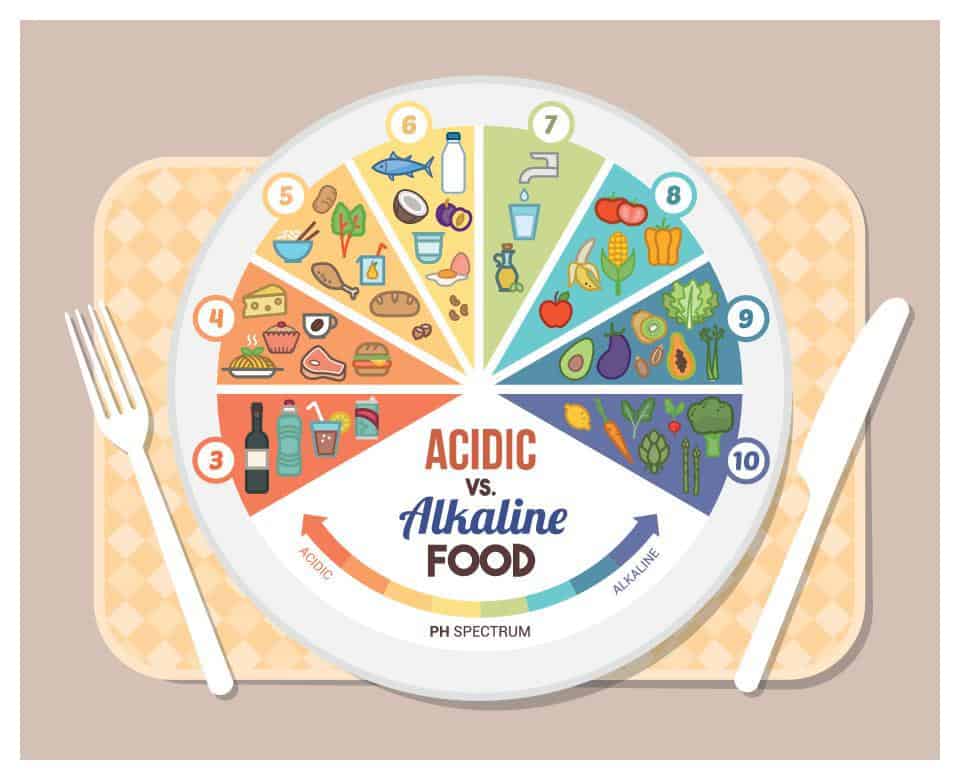Alkalizing diets have become a fairly common topic these days, especially in reference to disease. I can’t research cancer remedies without running into articles about how to balance your body’s pH levels with the right foods. In fact, until I came upon Dr. Royal Lee’s “Guideposts to Mental Health” in the SRP Historical Archives, I hadn’t realized that an imbalanced pH can also cause mental issues, not just physical. This makes sense in light of Dr. Lee’s reminder that improper nutrition causes chemical imbalance, which, of course, relates to hormone imbalance. Stated simply: we get moody!
Interestingly enough, when this article was published in Let’s Live magazine in 1958, Dr. Lee stated that mental disease was “rapidly becoming our number one health problem.” And if many of the common, pervasive mental health problems we see today did not go unrecognized, we would easily count such mental health disorders as our number one health problem, just as Dr. Lee predicted. But instead, the primary spotlight is on physical health, not mental. Heart disease and obesity have become the focus of pH balance, while mental health has been put on the back burner. So let’s shine some light on it!
Here’s a quick rundown of what all this pH talk is about: pH stands for “potential of hydrogen.” The hydrogen is a measure of the acidity or alkalinity of a solution. The spectrum is 0–14, with acid on the low end and alkaline on the high.
We often hear that alkalizing foods should be our top priority, but in truth, we need to be balanced between the two. We’re healthiest when we’re slightly more alkaline, 7.4 to be exact. The reason we hear so much more about the alkaline emphasis is that the Standard American Diet consists heavily of refined acidic foods like sugar, white flour, and excessive animal products. Thus, most people need to focus on vegetables, lentils, and other alkalizing foods just to balance the unhealthy amount of acidic foods they consume. (In addition, they should focus on cutting out the acidic foods that are not nutritional at all.) Refer to this chart for a complete list of alkaline and acid foods.
Now that we’re familiar with pH, let’s return to Dr. Lee’s findings. He gives us a rundown of the mental and neurological problems that arise from being either too acidic or too alkaline.
Overly Acidic
Too much acidity in your body, a condition known as acidosis, comes from consuming too many foods that are highly acidic and not enough foods that are alkalizing.
Overly acidic symptoms include:
- Nervous irritability
- Dehydration
- Dry mouth
- Irritation to loud noises
- Irritation to bright lights and sunlight
- Discomfort in high altitudes or closed off rooms
- Breathlessness and sighing frequently
- Abnormal sensitivity to pain
Dr. Lee concludes that overall, these symptoms create a dysfunctional, anti-social, and extremely introverted personality. Although this doesn’t necessarily amount to what we’d call a “serious mental disorder” today, we can certainly see how the rise of irritability and low tolerance in our society, if left unchecked, could develop into serious problems. So if this really is a result of high acidity and the discomfort it brings, let’s start making salad!
Dr. Lee states that another cause of intense irritability is a rapid drop in blood sugar, or what we commonly refer to as a sugar crash. This is especially prevalent first thing in the morning. He advises that “the best way to avoid rapid fall in blood sugar is to avoid refined sugars, as found in doughnuts, pies, cakes, ice cream, candy, and other forms of sweets.”
So if you’re a grumpy morning person, try a yummy, green, alkalizing meal before bed and see if it puts a spring in your step in the a.m. Interesting note: The common morning remedy for grogginess is coffee, which is actually highly acidic! Try switching to a green smoothie for your morning pick-me-up.
Overly Alkaline
Overly alkaline symptoms include:
- Stiffness of the muscles and joints, particularly in the morning
- Physical sensitivity to cold weather
- Cramping muscles
- Heartburn
- Cold hands and feet due to poor circulation
- Watery eyes and nose
- Drooling while sleeping
- Loss of taste and smell
- Allergies
- Asthma
Now before you throw away your asthma meds in place of an acid-rich meal, please keep in mind that all of these symptoms don’t directly point to a pH imbalance. Rather, they’re possible indicators of a pH imbalance, amongst other things. For instance, in his 1965 article “The Acid-Alkaline Balance and Patient Management,” Dr. George Goodheart points out the following:
The endocrine glands regulate the blood pH more than the diet, as you have already imagined, and therefore the support of the endocrines is important, especially the kidney. In this regard adequate fluids and sufficient vitamin A are very important. Natural sources of this material are to be preferred since there are fourteen different forms of vitamin A in the whole vitamin A complex.
The good news is that if you suffer from any of these symptoms, and they are in fact a result of your diet being too acidic or too alkaline, simply consuming a nutritiously balanced diet can lead to much-needed relief!
No matter the symptoms you may or may not be experiencing, if you don’t feed your body with healthy sources of acid and alkaline foods, you’ll inevitably experience dangerous side effects. As Dr. Lee brilliantly states, “The ability to live happily within our environment begins with good nutrition.”
Obtaining a Proper pH Balance
As Dr. Lee points out, not all acid and alkaline foods are created equal. For instance, many fruits and beans are healthy sources of acidic minerals, whereas acidic fried food and alcohol are clearly not. According to the research in Chris Karr’s book Crazy Sexy Cancer Tips, you should strive to consume a diet of 60 percent alkaline and 40 percent acidic foods to create an optimum disease-free environment in your body. Also take into consideration Dr. Lee’s advice that eating green vegetables in their raw state is the best way to obtain alkaline minerals.
You can determine your pH balance with saliva or urine strip tests, which are available online. Be sure to follow the directions carefully. The results can vary, based on when and how you test yourself. You can also refer to the acid/alkaline food chart mentioned above, and make sure to eat the correct amount of foods from each category. This may feel like a complicated math problem, but as you learn to identify healthy acidic and alkaline foods and incorporate recipes in your diet that offer the proper balance you need, it will soon become a normal part of your lifestyle. The health benefits you experience will be a marvelous motivator!
Photos from iStock/KatarzynaBialasiewicz (main image), elenabs (acid/alkaline chart)


